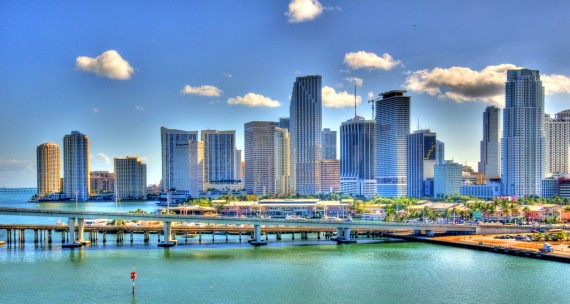Trending
South Florida continues to grow as home-flipping hot spot: report

South Florida’s home flippers have been gradually returning since the last market bubble’s burst drove them away, and a new report shows the region is now seeing more flips than it has in the past decade.
The report was authored by real estate research firm RealtyTrac, which looked at home sales for many major U.S. metropolitan areas during the first quarter of this year.
It found that of all South Florida’s home sales during the first quarter, 9.5 percent of them were flips, or sales made within one year of the property’s last purchase. Compared to the first quarter of last year, the home flip rate has risen by 9 percent.
For the last six years, that ratio has fluctuated mostly between 7 percent and 8 percent, but this most recent quarter is the first time South Florida’s share of home flips has closed in on the peaks reached before the market crash.
Historical data from RealtyTrac reveals the rate is now the highest it’s been since the third quarter of 2006, when it reached 9.8 percent. Home flippers proliferated South Florida’s housing market during the mid-2000s as property values began to quickly rise, with the ratio peaking at 14.1 percent of all home sales in the fourth-quarter of 2005.
Once the bubble burst, flippers fled the market, though they seem to again be riding the real estate boom as property values continue rising. Last year, South Florida saw more home flips than any other metropolitan area in the nation.
“After faltering in late 2014, home flipping has been gaining steam for the last year and a half thanks to falling interest rates and a dearth of housing inventory for flippers to compete against,” Daren Blomquist, senior vice president at RealtyTrac, said in the report. “While responsible home flipping is helpful for a housing market, excessive and irresponsible flipping activity can contribute to a home price pressure cooker that overheats a housing market, and we are starting to see evidence of that pressure cooker environment in a handful of markets.
During the first quarter of 2016, South Florida home flippers were snapping up properties at a median price of $127,500 per home and turning them around for $192,500, according to the report. It took them an average of 176 days to get the deal done, and the $65,000 median profit they reaped has also grown by 10 percent year-over-year.
Blomquist pointed out that because many home flippers in the U.S. are paying cash —- and therefore have a lot more skin in the game — they’re acting conservatively, which helps keep home flips from negatively affecting a market.
“The good news is that — despite the 20 percent jump in the first quarter — home flipping nationally is not far above its historic norm, and home flippers in most markets appear to be behaving rationally and responsibly,” he said in the report. — Sean Stewart-Muniz




